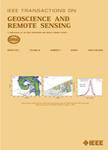版权所有:内蒙古大学图书馆 技术提供:维普资讯• 智图
内蒙古自治区呼和浩特市赛罕区大学西街235号 邮编: 010021

作者机构:China Univ Geosci Fac Comp Sci Minist Educ Wuhan 430074 Peoples R China China Univ Geosci Minist Educ Key Lab Geol Survey & Evaluat Wuhan 430074 Peoples R China
出 版 物:《IEEE TRANSACTIONS ON GEOSCIENCE AND REMOTE SENSING》 (IEEE Trans Geosci Remote Sens)
年 卷 期:2023年第61卷
页 面:1页
核心收录:
学科分类:0808[工学-电气工程] 1002[医学-临床医学] 08[工学] 0708[理学-地球物理学] 0816[工学-测绘科学与技术]
基 金:Fundamental Research Funds for the Natural Science Foundation of China [U21A2013, U1803117] Key Research and Development Program of China's Hubei Province [2021BID009] Natural Resources Research Project of China's Hubei Province [ZRZY2021KJ04] Opening Fund of Key Laboratory of Geological Survey and Evaluation of Ministry of Education [GLAB2022ZR02] Fundamental Research Funds for the Central Universities
主 题:Dense attention residual dual branches lithological unit classification (LUC) prior knowledge remote sensing.
摘 要:Lithological unit classification (LUC) refers to the classification of different types of rocks within an area, and it has been widely used in many fields, such as resource surveys and infrastructure planning. However, traditional field surveys require a lot of resources and time. Since remote sensing technology can rapidly acquire information without regional limitations, many researchers have focused on classifying lithological units with remote sensing images. However, in an area covered by vegetation, the beneficial information directly provided by remote sensing images is limited. Moreover, lithological interpretation often requires geological prior knowledge for guidance, which cannot be provided by remote sensing images. Thus, this study designed a dual-branch deep learning model to extract geological prior knowledge from geological information, and improve the accuracy of LUC. In the process of feature transmission of the model, a Dense Attention residual-atrous spatial pyramid pooling (DA-ASPP) module was proposed to maximize the preservation of lithological units features. The DA-ASPP integrates the idea of dense connection into ASPP for multiscale object feature preservation and adds residual structure into the channel attention mechanism to screen out the representative features of lithological units. The study area was located in southeastern Hubei Province, China, with seven categories of lithological units. A total of seven deep learning networks were compared. The proposed method achieved a mean intersection over union (IOU) of 44.61% with a Macro-F1 of 56.54%, which were better than those of comparison models. Moreover, the visualization results demonstrated the superiority of the proposed model in LUC.